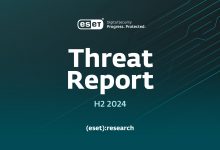2023 Cybersecurity Jargon For Stronger Digital Defense
In an era dominated by evolving digital landscapes and persistent cyber threats, the mastery of cybersecurity language is paramount for ensuring robust digital defense. As set the stage to say goodbye to 2023 and welcome 2024, a nuanced understanding of the latest cybersecurity jargon becomes not just beneficial, but essential.
This article delves into the intricacies of the dynamic language shaping the forefront of digital security, offering insights and clarity to empower professionals and enthusiasts alike.
The language of cybersecurity can be compared with a digital sword when it comes to ever-changing environments in cyberspace, where shadows keep both danger and safety. Ending 2023 leads us into a lexical exploration of the complex fabric of cyberslang, where cyber sentinels use secret cybersecurity jargon to secure the virtual world.
By decoding the intricacies of the 2023 cybersecurity jargon, we aim to equip readers with the knowledge necessary to navigate the ever-changing terrain of online security, fostering a proactive approach to safeguarding digital assets. So, let’s dive in and talk cyber – the cool way!
New Cybersecurity Terms Arising in 2023
Before exploring the popular cybersecurity lingo of 2023, let’s dive into the terms that have emerged this year, reflecting the ever-evolving landscape of threats and technologies.
Zero Trust Network Access (ZTNA): Also known as Software-Defined Perimeter (SDP), ZTNA ensures secure remote access to internal applications. Operating on an adaptive trust model, it grants access based on a need-to-know, least-privileged approach dictated by granular policies.
This means remote users can securely connect to private apps without being on the network or exposing them to the internet. For example, employees can access sensitive company data through ZTNA, maintaining network integrity.
Cybersecurity Posture Management: This term refers to the practice of proactively managing and maintaining an organization’s overall cybersecurity stance. It involves assessing, monitoring, and enhancing security measures to align with the ever-changing threat landscape.
Cybersecurity Supply Chain Risk Management (SCRM): SCRM focuses on identifying, assessing, and mitigating risks associated with the supply chain. As cyber threats increasingly exploit vulnerabilities in the supply chain, effective SCRM becomes pivotal in safeguarding organizations against potential compromises.
Cloudjacking: Cloudjacking denotes the unauthorized access and control of cloud infrastructure and resources. Perpetrators exploit vulnerabilities in cloud services to compromise data, emphasizing the need for robust cloud security measures.
Cybersecurity Risk Quantification (CRQ): CRQ involves assessing and quantifying cybersecurity risks in monetary terms. This approach aids organizations in prioritizing security investments and understanding the financial impact of potential cyber threats.
Extended Endpoint Detection and Response (XDR): XDR expands traditional Endpoint Detection and Response capabilities to encompass a broader range of security threats. It provides a comprehensive view of potential risks across various endpoints within an organization’s network.
Cybersecurity Meshed Architecture: This architectural concept emphasizes the interconnectedness and collaboration of cybersecurity components. A meshed architecture ensures a more dynamic and adaptive defense strategy against evolving cyber threats.
Attack Surface Management (ASM): ASM involves identifying, monitoring, and reducing an organization’s attack surface—the sum of points where an unauthorized entity can attempt to enter or extract data. Effectively managing the attack surface is crucial for minimizing vulnerabilities.
Quantum Computing Attacks: As quantum computers gain prominence, the threat of quantum computing attacks looms. These attacks leverage the immense computational power of quantum machines to compromise encryption algorithms, potentially jeopardizing sensitive information and critical systems.
Secure Access Service Edge (SASE): SASE represents a cloud-based security architecture that consolidates network security, cloud security, and security operations into a unified platform. This integration facilitates seamless security management across an organization’s entire network, spanning on-premises, cloud, and mobile devices.
Popular Cybersecurity Jargon of 2023
Supply Chain Attacks: Supply Chain Attacks entail the exploitation of vulnerabilities in third-party software or services employed by a company, allowing unauthorized access to their systems. In 2023, a significant instance of such an attack was observed with the MOVEit vulnerability, leading to an extensive chain of record-breaking breaches.
According to reports, this singular vulnerability inflicted a staggering cost of over US$9.9 billion on businesses, impacting more than 1000 enterprises and affecting the sensitive data of over 60 million individuals. This stark example underscores the profound financial and operational consequences that can result from supply chain vulnerabilities.
Ransomware 2.0: This signifies the evolution of ransomware tactics, incorporating techniques like double extortion (stealing data before encrypting it) and the implementation of “kill switches” for critical infrastructure. These advancements have garnered attention due to their increased sophistication and potential for severe consequences.
Cloud-Native Security: This emphasizes designing security measures into cloud applications and infrastructure from the ground up, rather than treating security as an afterthought. This approach ensures a robust and integrated security framework for cloud-based environments.
“DR” anything: The prevalence of terms like Cloud DR (Disaster Recovery), Data DR, and Identity DR reflects the growing trend of specialized detection and response solutions for various cybersecurity areas. This indicates a shift towards more targeted and efficient strategies in handling potential threats and vulnerabilities.
Open-Source Security Tools: These tools are becoming increasingly sophisticated and popular within the cybersecurity community. While these tools offer valuable resources, there are growing concerns about potential vulnerabilities and challenges related to their maintenance and security.
Biometrics & Behavioral Authentication: These are emerging as alternatives to traditional password-based user verification. This approach involves utilizing unique physical attributes like fingerprints, facial features, and even behavioral patterns (such as typing styles) to enhance authentication security.
Phishing with Deepfakes: These involve using AI-generated audio and video to make phishing scams more convincing and targeted. This manipulation of multimedia elements adds an extra layer of sophistication to social engineering attacks, making them more difficult to detect.
Quantum-Resistant Cryptography: These addresses the future threat posed by quantum to break current encryption methods. This term encompasses cryptographic techniques designed to withstand quantum attacks, ensuring the ongoing security of sensitive information.
AI-Powered Threat Hunting: This leverages advanced machine learning algorithms to proactively identify and mitigate potential cybersecurity threats before they escalate. This approach enhances the efficiency and speed of threat detection and response.
Threat Intelligence Orchestration: This involves the integration and automation of threat intelligence feeds into cybersecurity processes. This strategic coordination enables organizations to better manage and streamline their response to emerging threats by leveraging timely and relevant intelligence.
Cybersecurity as a Service (CaaS): This involves outsourcing cybersecurity functions to third-party providers, allowing organizations to access a range of security services on a subscription basis. This model enhances flexibility and scalability in managing cybersecurity measures.
As we talk cyber—the cool way—let’s carry forward the insights gained from this lexical journey. Armed with knowledge and a proactive mindset, we can collectively contribute to building a more secure digital future.
After all, in the world of cybersecurity, understanding the language is the first step toward crafting a vigorous defense against the unseen threats that lie ahead. Stay vigilant, stay informed, and let’s continue the dialogue in the ever-evolving language of cybersecurity.





![President Joe Biden delivers remarks about the Colonial Pipeline hack. [Washington / 2021.05.13]](https://osintcorp.net/wp-content/uploads/2025/01/Biden-White-House-to-go-all-out-in-final-sweeping-220x150.jpg)